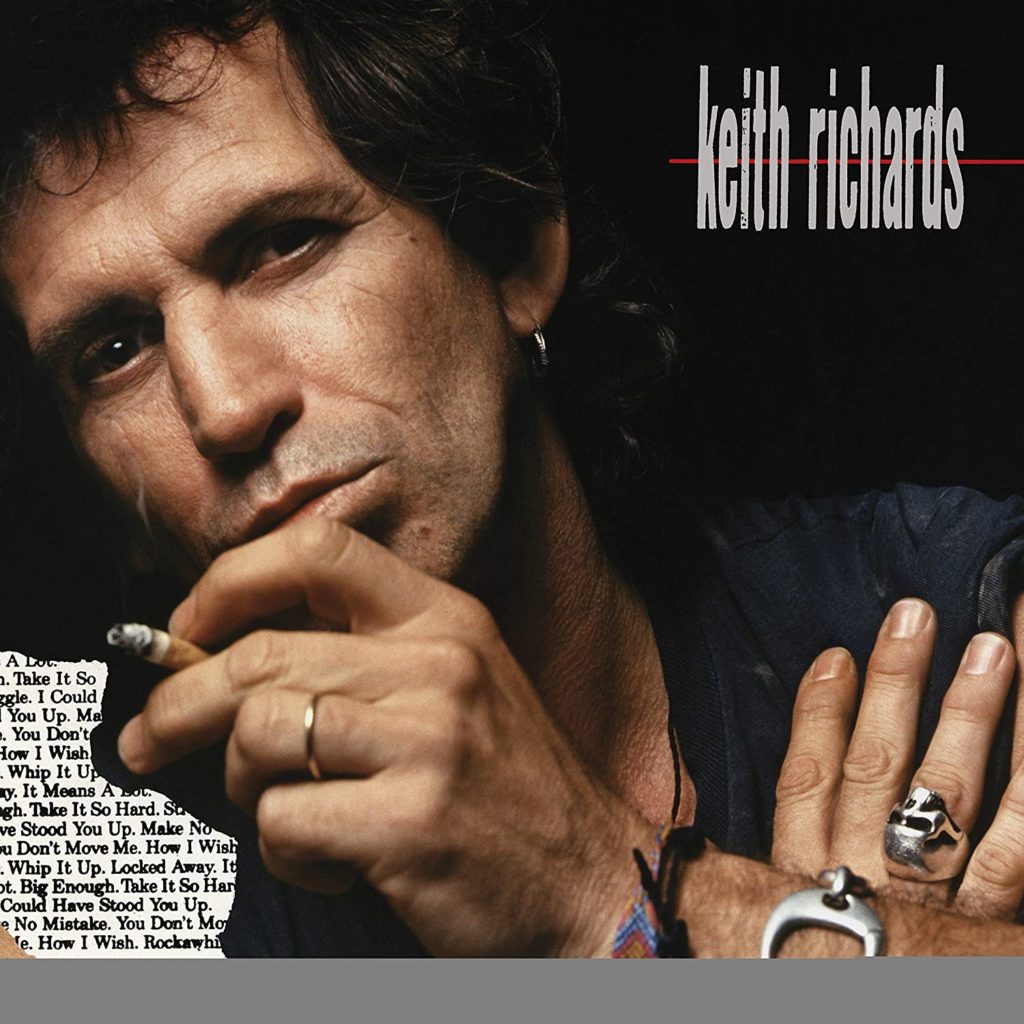
It’s 1988, and Mick Jagger wants to be a solo artist. Maybe ten years after that was feasible. To top things off, the Rolling Stones have just come off two of the three weakest albums in their catalog, Undercover and Dirty Work. (Their Satanic Majesty’s Request was, shall we say, not Sgt. Pepper’s and leave it at that. Best to forget that one altogether.) Worse, it seems Mick and Keith are quits.
Or is it worse? I recall flipping on WMMS in Cleveland and hearing that unmistakable G-tuned guitar playing those opening chords. And the voice is unmistakable. It’s Keith, scolding us that we shouldn’t take it so hard. Did the Stones do a new album? Did they ditch Mick and move on without him?
No, Keith decided he was going to make Keith music, the kind you could hear Charlie and Bill having fun laying the beat to, the kind that attracted Daryl Jones to the band a decade or so later when Bill Wyman retired. Oh, this wasn’t a Stones album. The name of the band was and is The X-Pensive Winos. The album is Talk Is Cheap, which some critics called “the best Stones album in years.” They had a point. The Stones hadn’t sounded like the Stones since Tattoo You, eight years in the rearview and including some outtakes from Mick Taylor’s days in the band.
The album starts off not with Keith’s G-tuned guitar laying down a new riff. Instead, it’s Bootsy Collins – Yes, that Bootsy Collins from P-Funk – reminding you that John Entwistle and Geddy Lee of Rush aren’t the only ones who could make a bass guitar sing. He blends seamlessly into the Winos, which include future Stones gun for hire Steve Jordan (who recently stepped in for the late Charlie Watts), Waddy Watchell on lead guitar, the lucious-sounding Sarah Dash on backing vocals, Charlie Drayton normally on bass, Ivan Neville (son of Aaron Nevill) on keyboards, and, of course, salaried Stone Bobby Keys on sax. Richards had to get Ivan Neville. Ian Stewart had already departed this world. There’s a who’s who of Stone side players on this, including Chuck Leavell, but the most notable are an ex-Stone (Mick Taylor) and a non-Stone, Patti Scialfa, aka Mrs. Springsteen.
The most notable song on the album is the aforementioned “Take It So Hard,” which is quintessentially Keith. It opens with those chords that mark Keith’s signature sound. It would be at home on any Stones album (with two forgettable exceptions) between 1970 and 2005. It also was an immediate hit. The other standout song puts the rift between Mick and Keith, one that never quite healed, not without some prominent scars, is “You Don’t Move Me.” Musically, it is spare, with almost Floyd-like pauses in each instrument. Keith sings in a raspy voice full of anger and sorrow as, without naming names, he tells Mick Jagger it’s over. “One face so seamy/The other don’t see me” Keith says they are still friends (Obviously, as the Stones are touring with the surviving members pushing 80), but, as he said in his autobiography, Life, it’s tough being Mick’s friend.
There are a couple of other standouts on the album. Keith gets full on rockabilly with Mick Taylor on lead with “I Could Have Stood You Up.” This is Keith’s vision, staying true to the roots. Well, of course, it is! Stones/Winos saxophonist Keys started his career backing Buddy Holly. The other sounds like a song that could have been meant for a Stones album, “Make No Mistake.” Keith’s vocals sound as though he’s emulating Mick as if that’s whom the song was meant for. Sarah Dash is brought up to co-lead vocals to respond to the verses. Classic Stones? Maybe, but it’s right at home here.
Between the two post-Tattoo You eighties albums and Mick’s solo work, it’s clear who actually is truer to the music. This is music both men endured two years of poverty to learn. It’s not trendy, just true.
That’s when it works best.